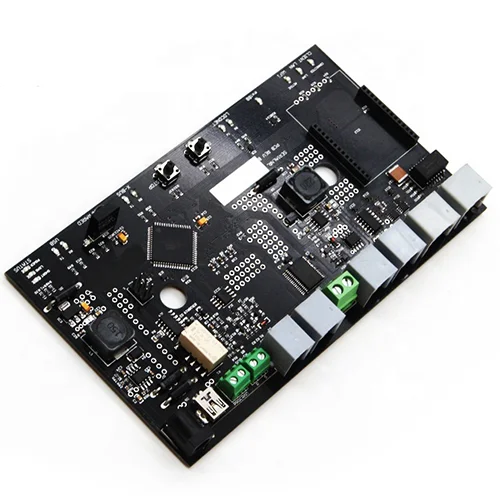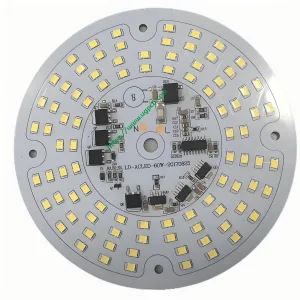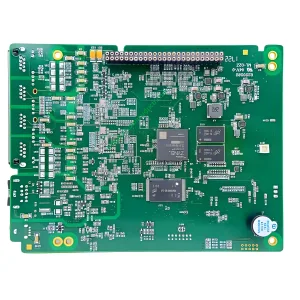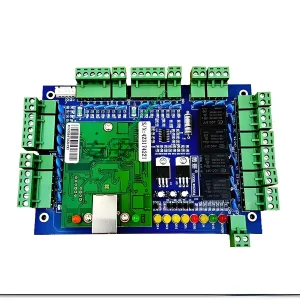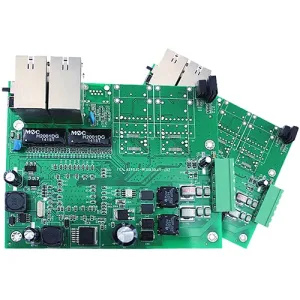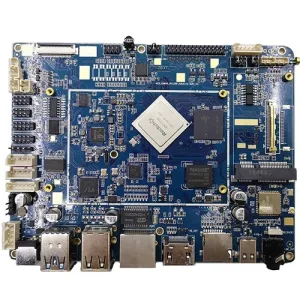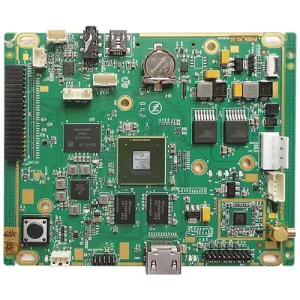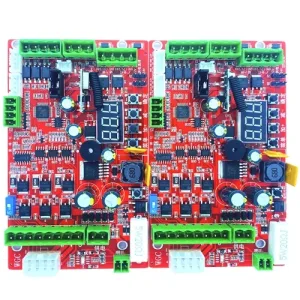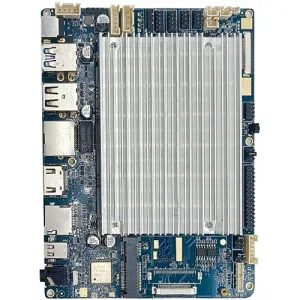Introduction de base
Définition et technologie
Un chargeur sans fil fait référence à un chargeur connecté à un terminal qui doit être facturé sans cordon d'alimentation de charge traditionnel. Il adopte la dernière technologie de charge sans fil. En utilisant le champ magnétique généré entre les bobines, il peut transmettre par magie l'énergie électrique. La technologie de couplage inductive deviendra un pont reliant les stations de base et l'équipement de base.
Avantages et inconvénients
Technologie de charge sans fil obtenue 20 brevets 2007. Une variété d'appareils peuvent utiliser une station de base de chargement, Faire des scénarios de charge câblés pour les téléphones portables, Players MP3, outils électriques, et d'autres adaptateurs de puissance obsolètes. L'avantage de la technologie de charge sans fil réside dans sa commodité et sa polyvalence. Cependant, son inconvénient est une faible efficacité et sa capacité à ne fournir que l'énergie électrique.
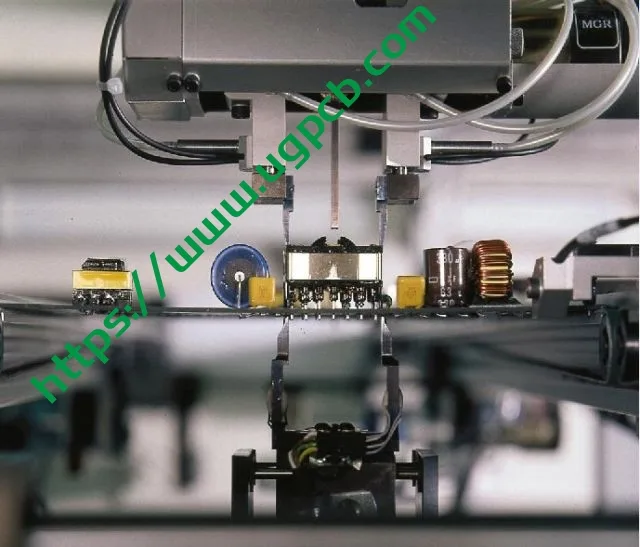
Processus historique
Découverte historique
De retour dans les années 1830, Michael Faraday a découvert que les changements dans le champ magnétique environnant induiraient un courant électrique dans un fil. Dans les années 1890, Le scientifique d'origine serbe Nikola Tesla a demandé le premier brevet. Malheureusement, La recherche dans ce domaine a été retardée d'un siècle en raison d'une faible efficacité de transmission et des risques de sécurité.
Développement ultérieur
Le professeur Xu Shuyuan de l'Université de la ville de Hong Kong a développé avec succès un “Plate-forme de chargement de batterie sans fil” dans les premières années, qui peut payer automatiquement plusieurs produits électroniques sur une plate-forme de charge via des champs électromagnétiques à basse fréquence. Les chercheurs de l'Institut de technologie du Massachusetts ont également progressé dans la transmission sans fil de l'électricité. La conception de Soljacic pour la transmission d'énergie sans fil sans radiation a une limite de distance, Et ils visent à accroître l'efficacité à 70% à 80% Dans les trois à cinq ans.
Principe de fonctionnement
Résonance et induction
Les physiciens savent depuis longtemps que l'énergie est efficacement transférée entre deux objets qui résonnent à la même fréquence. La technologie de charge sans fil tire parti de ce principe, Appliquer le principe de l'induction des ondes électromagnétiques et de la technologie d'induction AC associée. Il utilise des bobines correspondantes aux extrémités d'envoi et de réception pour envoyer et recevoir des signaux CA induits pour la charge.
Application pratique
Un nouveau type de chargeur sans fil, inventé à l'origine par une entreprise britannique, ressemble à un coussin de souris en plastique équipé d'une gamme dense de petites bobines pour générer un champ magnétique et transmettre de l'énergie à un chargeur dédié. La bobine de réception, en blessure en alliage magnétique avec du fil, peut être facilement attaché à l'équipement électronique. Cette nouvelle invention permet à plusieurs appareils d'être facturés simultanément n'importe où sur le “coussin de souris,” et le champ magnétique généré est suffisamment faible pour ne pas affecter les éléments à proximité qui utilisent des données d'enregistrement magnétiques.
Principes de charge sans fil
Le système de charge sans fil adopte principalement le principe de l'induction électromagnétique et réalise la transmission d'énergie par couplage énergétique à travers des bobines. Comme indiqué sur la figure, Lorsque le système fonctionne:
- La borne d'entrée convertit la puissance du secteur AC en puissance CC à travers le circuit de redresseur à pont complet, ou fournit directement l'énergie au système avec un terminal DC 24 V.
- Après avoir traversé le module de gestion de l'alimentation, Le courant direct de sortie est converti en courant alternatif à haute fréquence par l'oscillateur en cristal actif 2M et fourni à l'enroulement primaire.
- L'énergie est couplée par deux bobines inductives, et la sortie de courant par la bobine secondaire est convertie en courant direct par le circuit de conversion de réception pour charger la batterie.
Un champ magnétique changeant produira un champ électrique changeant, et vice versa. Leurs amplitudes sont liées à leur taux de changement, et le taux de changement d'une fonction sinusoïdale se traduit par une autre fonction sinusoïdale. Ainsi, Les ondes électromagnétiques peuvent se propager, et la génération de la tension induite de la bobine est liée au changement de flux magnétique. Ainsi, Le champ magnétique changeant à l'intérieur de la bobine génère une tension induite, terminer le processus de charge.
Charge sans fil du téléphone mobile
La charge sans fil de téléphone mobile est une méthode de charge relativement nouvelle. Son principe est simple: séparer le primaire et le secondaire des transformateurs ordinaires pour atteindre des fins sans fil. Notamment, Le taux de travail de la charge sans fil est élevé, Et même le noyau de fer peut être jeté, avec la bobine directe atteignant la fonction du transfert d'énergie.
Caractéristiques de base de la technologie de charge sans fil
Sécurité
Du point de vue théorique, La technologie de charge sans fil est inoffensive à la sécurité humaine. Le principe de résonance utilisé dans la charge sans fil est une résonance de champ magnétique, qui ne transmet uniquement entre les bobines qui résonnent à la même fréquence, tandis que d'autres appareils ne peuvent pas accepter le groupe. Le champ magnétique utilisé est lui-même inoffensif pour le corps humain. Cependant, Être une nouvelle technologie, Certaines personnes peuvent avoir des préoccupations initiales, apparenté au moment où les pôles d'antenne Wi-Fi et de téléphonie mobile ont d'abord émergé. En réalité, La technologie elle-même est inoffensive.
Résonance magnétique
La technologie de charge sans fil de Maiyuan utilise une résonance magnétique pour transmettre des charges dans les champs électriques et magnétiques entre le chargeur et l'appareil. La bobine et le condensateur forment une résonance entre le chargeur et l'appareil.
Larges applications
Maiyuan affirme que ce système peut être largement utilisé à l'avenir, comme les zones de charge pour les véhicules électriques et la transmission d'alimentation pour les puces informatiques. Le temps de charge requis par le système de charge développé par cette technologie est considérablement réduit par rapport aux méthodes actuelles.
Taux de conversion élevé
Le taux de conversion de la charge sans fil Maiyuan est de plusieurs points de pourcentage supérieur à celui de la charge câblée. Une conversion élevée est cruciale pour l'application globale des chargeurs sans fil. Cependant, La technologie de charge sans fil est limitée par la distance. Pour le développement futur, Il est nécessaire de résoudre le problème du positionnement précis de la bande d'ondes et de la plage de champs magnétiques pour la transmission longue distance.
Défis de la puce de base
La puce de base est un défi important dans l'application de la technologie de charge sans fil dans les produits. Contrôle précis de la plage de rayonnement, fréquence de champ magnétique, et d'autres contrôles sont mis en œuvre par des puces.
Résumé du problème
Goulot d'étranglement du développement des applications du marché
- Core Wireless Charging Technology imperfections
- Difficulté à réaliser une transmission à longue distance
- Exigences matérielles élevées pour le positionnement à longue distance
- Correspondance contrôlée et petite hauteur de résonance de champ magnétique
- Plage d'applications limitée
- Facteurs du marché – Les développeurs hésitent à investir massivement dans la recherche et le développement technologiques en raison de la psychologie des consommateurs.
Danger de rayonnement
Les chercheurs du MIT déclarent que le corps réagit fortement aux champs électriques mais à peine aux champs magnétiques, suggérer que le système n'affecterait pas la santé humaine. Cependant, c'est spéculatif. Certains chercheurs expriment une préoccupation, et d'autres expériences sont nécessaires avant l'application réelle. En tant que produit de charge électronique, Le chargeur lui-même émet des radiations, Mais la puissance du chargeur sans fil est petite, Le temps de charge est long, et le rayonnement produit est minime, Poser peu de mal aux gens.
Port unifié
Pour éviter les déchets inutiles et générer plus de déchets électroniques, La Chine met en œuvre la normalisation unifiée des ports du chargeur de téléphone mobile. La technologie de charge sans fil est prête à devenir populaire, utilisable non seulement pour les téléphones mobiles mais aussi pour les caméras numériques, iPhones, iPad, et cahiers. Le Fujitsu du Japon vise à étendre ce succès de l'électronique portable à la charge des véhicules électriques. Leur objectif ultime est de mettre en place le public “points de charge” dans les rues, Fournir des services de charge tout temps de 24 heures pratiques pour les appareils numériques portables et les utilisateurs de véhicules électriques. Les chargeurs sans fil sont plus intelligents et éconergétiques. Bien que leur efficacité soit sur 70%, égal à l'équipement de charge câblé, Ils ont une fonction d'arrêt automatique lorsqu'ils sont complètement chargés, Éviter la consommation d'énergie inutile. Les taux d'acceptation des performances s'améliorent continuellement.
Téléphone mobile récepteur de charge intégré et norme de charge sans fil unifiée
En intégrant un récepteur de charge dans les téléphones mobiles et en établissant une norme de charge sans fil unifiée, L'adoption et la commodité de la charge sans fil peuvent être encore améliorées.
Aperçu de la technologie de charge sans fil
Pour réaliser la charge sans fil de téléphones mobiles et d'autres produits, Il doit y avoir deux parties: l'émetteur, qui est connecté à l'alimentation et responsable de la transmission d'énergie électrique à un large espace, Et le récepteur, qui est généralement installé sur les produits électroniques et utilisé pour recevoir de l'énergie électrique. La technologie de charge sans fil a commencé à être utilisée dans les produits de téléphone mobile. Prendre l'iPhone à titre d'exemple, Les fabricants de charges sans fil l'ont redéfini et installé une sorte de “vêtements” similaire à “pomme”. En tant que récepteur de charge sans fil, Il apparaît sous la forme d'ajout d'un boîtier de charge de téléphone portable, Mais les produits modifiés connexes peuvent être lancés en Chine. Surnommé le “Qi à travers,” L'affaire prend en charge les iPhones et les Blackberry, donner aux utilisateurs un accès précoce à la fonctionnalité sans avoir à remplacer leurs téléphones. Très tôt 2013, Le récepteur de charge sans fil sera entièrement “amené” et devenir une puce de réception de charge sans fil intégrée dans les téléphones mobiles, seulement aussi grand qu'un ongle. Nokia, Philips, LG, Samsung, Sony Ericsson, iPhone, HTC, Google, Zte, Pointu, JANTE, Et de nombreux autres fabricants de téléphonie mobile de renommée internationale prennent tous en charge cette technologie, et les chargeurs sans fil peuvent également être regroupés avec des téléphones mobiles à vendre.
Compatibilité et la norme QI
L'importance de la compatibilité
La clé de la charge sans fil des téléphones mobiles est la compatibilité, et la norme QI peut assurer la compatibilité de la marque. La technologie de charge sans fil utilise principalement une technologie électromagnétique. L'émetteur convertit le courant en électromagnétique, Et le téléphone mobile utilise le récepteur de puces intégré pour convertir l'électromagnétique en courant pour charger le téléphone mobile. La clé de la promotion de la technologie de charge sans fil est de s'assurer que les chargeurs sans fil de divers fabricants sont compatibles.
La norme QI
La formulation de la norme QI permet à la charge sans fil d'avoir une spécification technique unifiée et assure la compatibilité du même chargeur avec plusieurs marques et produits. Tricheurs menno, Président de la Wireless Charging Alliance, a déclaré que la norme de charge sans fil Qi utilise une technologie d'induction électromagnétique, qui est plus efficace et plus sûr que les autres technologies. La norme de charge sans fil Qi comprend trois aspects: interface, performance, et réglementations. C'est un défi considérable pour la popularisation de la technologie de charge sans fil. Donc, Les téléphones portables qui passent la norme QI peuvent être alimentés par n'importe quelle station de base de charge certifiée QI, base, ou d'autres appareils rechargeables. La première pré-réaffirmation de Qi pour les appareils n'est pas plus élevée que 5 watts, qui peut être une grande limitation pour certains fabricants qui souhaitent que les ordinateurs portables utilisent également la technologie de charge sans fil.
Disponibilité du marché des produits standard QI
Les fabricants ont lancé des produits de charge sans fil QI standard, Et le marché est vaste. La plus grande batterie du monde et l'équipement d'équipement d'éclairage portable Energizer (Énergisant) a déclaré qu'il lancera bientôt un produit de chargeur sans fil qui prend en charge la norme QI, et apportera d'abord une nouvelle expérience de charge sans fil aux utilisateurs d'Apple iPhone3GS et BlackBerry Blackberry Curve8900. En même temps, Selon les données fournies par la société d'études de marché ISUPPLI, Le marché des équipements de charge sans fil a atteint une échelle de 14 milliards de dollars américains 2013. Philips a déjà commencé à faire de nouveaux téléphones qui incluent la charge sans fil. Le téléphone portable Philips X723 est déjà apparu, Et il dispose d'un écran 240x400 de 3,2 pouces avec GPS et d'une caméra de 3 mégapixels. La bonne nouvelle est que la machine est livrée en standard avec un chargeur sans fil Xeniumq1 (Norme de l'alliance de charge sans fil QI), Mais le temps et le prix de lancement spécifiques n'ont pas encore été divulgués.
Recevoir une antenne
Bien que cet article se concentre sur les chargeurs, Il donne également un aperçu de la réception d'antennes. Parce que ce type de dispositif de charge sans fil est essentiellement un transformateur, La primaire est installée dans le chargeur, et le secondaire est installé dans le terminal.
Choisir une bonne antenne de charge
Parce que l'antenne de réception qui ne correspond pas au chargeur provoquera des fluctuations de courant dans le circuit de chargement, Comment choisir une bonne antenne de charge?
L'antenne terminale a besoin d'un blindage magnétique
Si l'antenne de charge n'est qu'une bobine creuse, Lorsque les objets métalliques à proximité approchent, cela provoquera un courant de courtisement, ce qui réduira l'efficacité de charge, empêcher l'énergie du chargeur de rayonner, augmenter le courant, et faire chauffer le chargeur.
Sélection du milieu magnétique
Le milieu magnétique sélectionné par le chargeur est divisé en deux catégories: Matériaux magnétiques organiques et matériaux magnétiques inorganiques. Le matériau magnétique organique peut être rendu très mince et déformé, qui convient au lien de la couverture arrière du téléphone mobile et utilisé dans le téléphone mobile; Le matériau magnétique inorganique est fait de ferrite fritté, qui est fragile et adapté à l'installation dans de grands espaces.
 LOGO UGPCB
LOGO UGPCB

